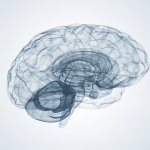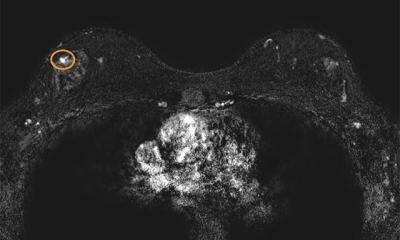
Image source: NYCU
News • New insights on CLEC5A
Immune gene discovery could prevent memory loss in Alzheimer's patients
NYCU and NHRI study offers unprecedented insights into disease mechanisms
A gene once believed to fight only viral infections could also hold the key to preventing memory loss in Alzheimer’s patients. Researchers from National Yang Ming Chiao Tung University (NYCU) and Taiwan’s National Health Research Institutes (NHRI) have revealed that the immune gene CLEC5A plays a critical role in the progression of Alzheimer’s disease, rewriting the scientific community’s long-held understanding of dementia. Published in the Journal of Neuroinflammation, their results offer new insights into Alzheimer’s disease mechanisms and pave the way for new drug development.
It started as a hunch without solid evidence
Shie-Liang Hsieh
Traditionally, CLEC5A has been associated with viral defense, activating the immune system in response to diseases like dengue fever, Japanese encephalitis, influenza, and Covid-19. It has also been linked to the deadly "cytokine storm" phenomenon. However, in a surprising twist, a research team led by Associate Professor Han-Juo Cheng of NYCU's Institute of Brain Science and Dr. Shie-Liang Hsieh, Director of NHRI's Immunology Research Center, discovered that this gene also plays a pivotal role in Alzheimer's disease.
Using genetic engineering techniques, the team bred Alzheimer's model mice that lacked the CLEC5A gene and compared them with normal Alzheimer's mice. The results were astonishing: mice without the CLEC5A gene performed significantly better in memory and learning tests. They showed a marked reduction in harmful β-amyloid plaque accumulation—a hallmark of Alzheimer's pathology.
Recommended article

Article • Cerebral insights
The brain: mysterious grey matter
More than 80 billion neurons, trillions of synapses and almost 6 kilometres of neural pathways: The brain is an anatomical masterpiece – and still puzzles science. Keep reading to find out about latest research and therapies of brain diseases.
Professor Cheng explained that microglia—the brain’s resident immune cells—become hyperactive in response to abnormal β-amyloid buildup, mistakenly attacking healthy neurons and accelerating disease progression. However, when CLEC5A was removed, not only did microglial inflammation decrease, but their ability to clear β-amyloid improved dramatically, slowing the progression of brain degeneration.
This discovery positions CLEC5A as a promising new therapeutic target for Alzheimer’s. By designing drugs to block this gene’s protein function, scientists believe they may open a new front in the battle against dementia. “It started as a hunch without solid evidence,” admitted Dr. Hsieh, who previously identified CLEC5A as a key factor in severe dengue and Japanese encephalitis cases. Initially, the team was uncertain whether this virus-related gene could also be implicated in Alzheimer’s. However, further research revealed that CLEC5A doesn’t just recognize viruses—it’s also involved in autoimmune diseases like lupus, raising suspicions that it might also mistakenly attack the brain’s nerve cells.
This study also credits NYCU doctoral students Yu-Yi Lin and Wen-Han Chang for their critical contributions. The findings have drawn significant attention from the international scientific community.
As Alzheimer’s cases rise globally, this breakthrough led by Taiwan’s scientific teams not only offers a fresh perspective on the disease’s origins but also points to an entirely new direction for drug development, the research team hopes. Shortly, targeted therapies against CLEC5A could offer countless families a new beacon of hope in the fight against memory loss.
Source: National Yang Ming Chiao Tung University
20.05.2025











